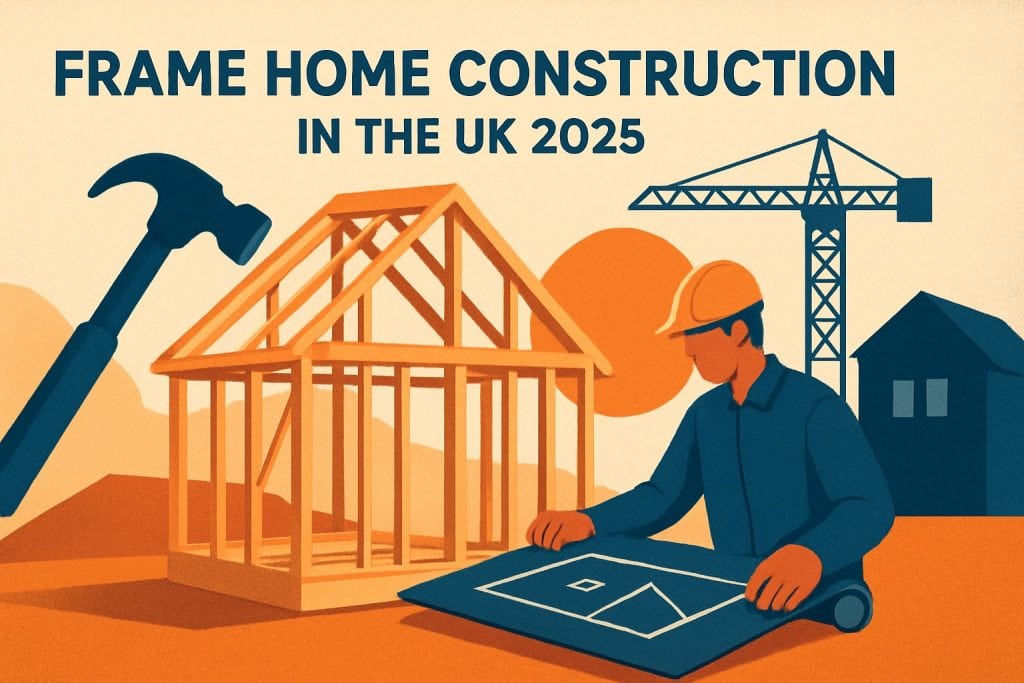Frame home construction is rapidly transforming the UK housing landscape, attracting attention for its speed, sustainability, and design flexibility. As more homeowners and developers seek eco-friendly and stylish living spaces, this building method stands out for 2025.
In this essential guide, you will find clear explanations of frame home construction, from choosing materials to navigating planning and regulations. We break down each step, highlight cost considerations, and reveal the latest trends shaping the industry.
Ready to create a durable, energy-efficient home? Discover how modern framing techniques can help you achieve your vision and make informed decisions for a successful project.
Understanding Frame Home Construction
Frame home construction is a method where a building's structural skeleton is formed from posts and beams, supporting infill panels and finishes. Unlike traditional brick-and-block, which relies on solid masonry walls, frame home construction creates a lighter yet robust framework. This approach enables rapid assembly and flexibility in layout. The core elements—posts, beams, and infill panels—work together to support floors and roofs. For example, timber frame systems use engineered wood, while steel frame homes utilise metal beams for increased strength. Both offer distinct benefits to UK homeowners.
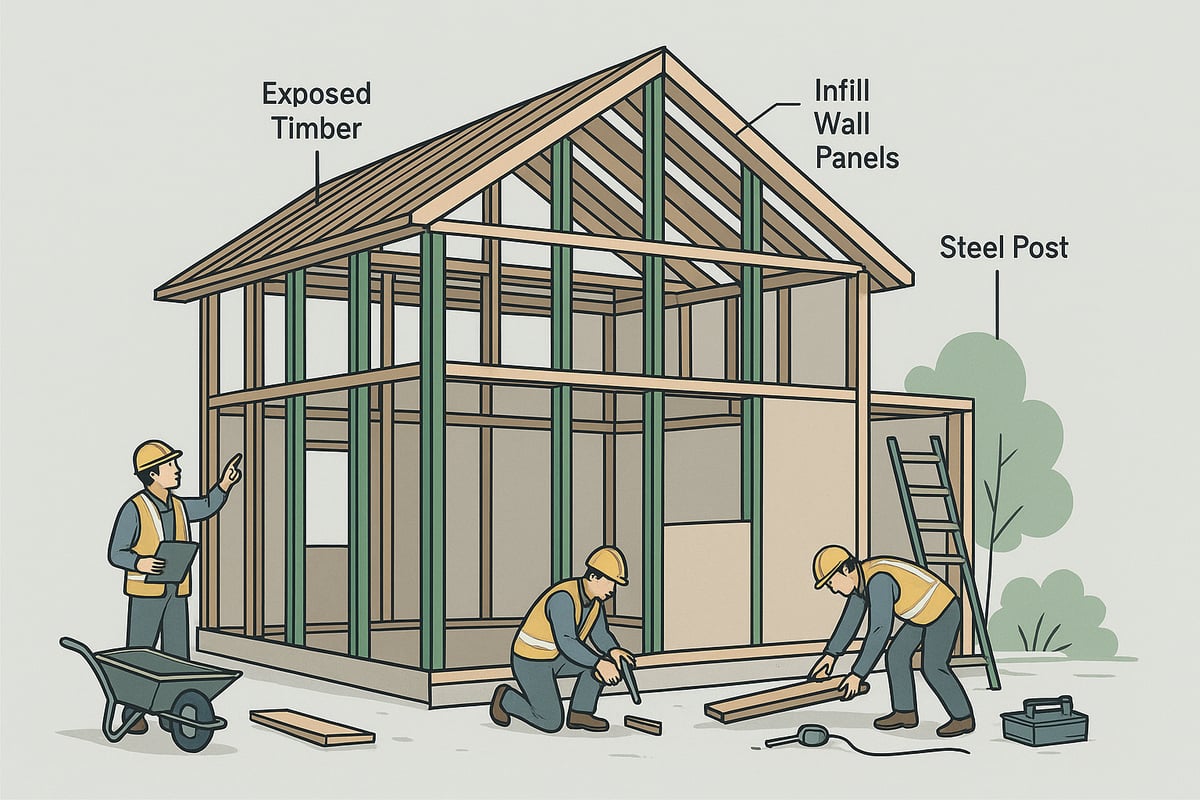
What Is Frame Home Construction?
Frame home construction relies on a skeleton of closely spaced posts and beams, which form the backbone of the building. This framework supports the entire structure, allowing for wide-open interiors and creative layouts. Unlike solid masonry, frame home construction minimises material weight and can be used with a variety of infill panels, from timber to insulated steel. Timber frames are often chosen for their natural warmth and sustainability, while steel frames offer high strength and resistance to pests. Both systems are gaining traction in the UK market.
Advantages of Frame Homes in 2025
One of the main reasons frame home construction is booming in 2025 is the rapid build time. Prefabricated frames reduce on-site labour, cutting project timelines significantly. The design flexibility of frame home construction lets homeowners customise floor plans, window placements, and ceiling heights with ease. Additionally, these homes excel in thermal efficiency, with well-insulated panels and airtight construction lowering energy bills. A recent UK case study showed a modern timber frame home achieving a 30 percent reduction in annual heating costs compared to masonry builds.
Types of Framing Systems
A variety of framing systems exist within frame home construction, each offering unique advantages. Timber frames are popular for their renewable nature and ease of assembly. Steel frames, on the other hand, provide exceptional durability and are ideal for larger spans or challenging sites. Hybrid systems blend timber and steel, often used in coastal or exposed locations. Prefabricated frames are manufactured off-site, ensuring precision and quality, while on-site construction allows for bespoke adaptations. Hybrid timber and steel frames are increasingly specified for energy-efficient, coastal UK homes.
Common Myths and Misconceptions
Despite its popularity, frame home construction faces persistent misconceptions. Some believe these homes lack durability or have higher fire risks, yet modern timber and steel frames meet strict UK building regulations for safety and longevity. Maintenance is often no more demanding than with traditional homes. In fact, timber frame homes have seen substantial growth in the UK, now holding a significant market share. According to Timber frame’s rising market share, the adoption of timber frame construction continues to accelerate, reflecting increased confidence and proven performance.
Key Considerations for UK Homeowners
Before choosing frame home construction, UK homeowners should assess site suitability, including soil conditions and access to services. Understanding planning requirements and local trends is vital for a smooth approval process. Selecting experienced contractors with a track record in frame home construction can make a significant difference in build quality and project timelines. With the right expertise and careful planning, frame home construction offers a modern, efficient, and attractive alternative for new homes across the UK.
Planning and Regulations for Frame Home Construction
Planning is the bedrock of any successful frame home construction project in the UK. Understanding the permissions, regulations, and practical steps involved will help you avoid delays and unexpected costs. Whether you are a self-builder or developer, being well-informed at this stage is essential for a smooth journey from concept to completion.
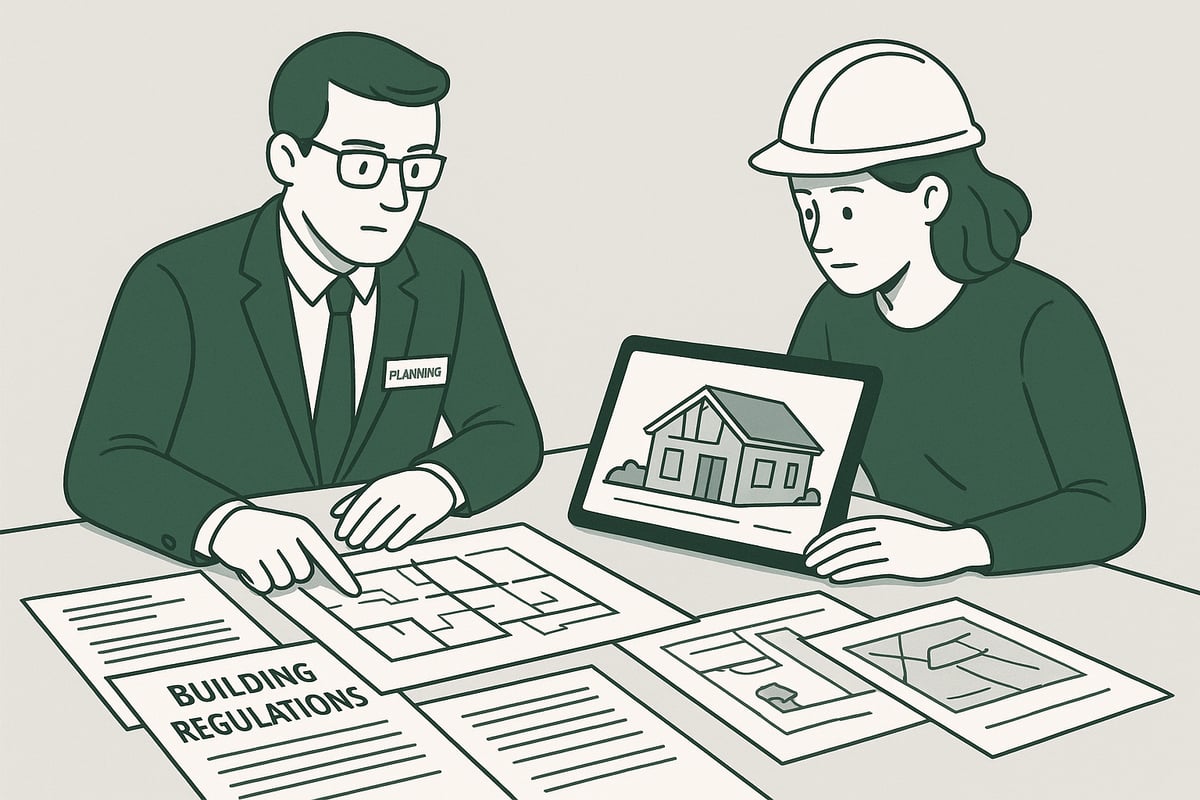
Navigating UK Planning Permission
Securing planning permission is the first major hurdle in frame home construction. The process involves submitting detailed plans to your local authority, outlining the proposed site, design, and use.
Key documents include:
- Site location plan
- Design and access statement
- Elevations and floor plans
Timelines can vary, but most decisions are reached within eight to twelve weeks. Early engagement with planning officers and neighbours increases your chance of approval. For a thorough overview of the process and tips to streamline your application, the Framed Home Blog Guide provides valuable step-by-step insights.
Building Regulations and Compliance
Every frame home construction project must meet UK building regulations, covering structural integrity, fire safety, and energy performance. In 2025, updates to Part L will tighten energy efficiency standards, meaning careful attention to insulation and airtightness is required.
Frame homes must demonstrate compliance through:
- Structural calculations
- Fire resistance ratings
- Energy performance certificates
Working closely with building control officers throughout the build will help ensure your frame home construction passes inspections and achieves certification. Keeping updated with regulatory changes is crucial for a compliant, future-proof home.
Site Assessment and Preparation
Before any building begins, a thorough site assessment is essential for frame home construction. Start with soil testing to determine ground conditions and foundation requirements.
Other key considerations:
- Site access for deliveries and machinery
- Proximity to utilities like water, electricity, and drainage
- Environmental factors such as flood risk or protected habitats
Rural plots may present unique challenges, including limited access or the need for off-grid solutions, while urban sites often require careful coordination with neighbours and local authorities. Addressing these issues early can prevent costly delays during frame home construction.
Selecting the Right Design and Architect
The design phase is where your vision for frame home construction takes shape. Choosing an architect with specialist experience in frame systems ensures your home is both beautiful and compliant with UK standards.
Key design considerations include:
- Balancing modern aesthetics with planning rules
- Maximising energy efficiency through layout and features
- Incorporating popular trends like open-plan living or vaulted ceilings
Eco-friendly features, such as green roofs or solar panels, can be integrated seamlessly at this stage. By collaborating with experts, you safeguard the long-term value and functionality of your frame home construction.
Budgeting and Financing Your Frame Home
A clear budget is vital for successful frame home construction. Start by estimating core costs:
- Materials (timber or steel frame)
- Labour and contractor fees
- Planning and building permit charges
Investigate funding options like self-build mortgages or government grants, especially for sustainable builds. In 2025, average costs per square metre will differ between timber and steel frames, so factor this into your planning. Transparent budgeting and access to green incentives make frame home construction more achievable and rewarding for UK homeowners.
Step-by-Step Guide to Frame Home Construction in 2025
Embarking on a frame home construction project in 2025 requires a clear roadmap. From concept to completion, each stage brings unique considerations, regulations, and opportunities for innovation. This guide walks you through every critical step, ensuring your frame home construction journey is efficient, compliant, and rewarding.

Step 1: Design and Engineering
The design and engineering phase sets the foundation for successful frame home construction. Collaboration between architects, structural engineers, and clients is essential. Modern tools such as Building Information Modelling (BIM) and 3D visualisation help translate ideas into practical designs.
During this stage, structural loads are calculated to ensure the frame can withstand wind, snow, and occupancy demands. The choice between timber, steel, or hybrid systems is made based on site conditions, client preferences, and sustainability goals.
A well-defined brief, including room layouts, energy targets, and aesthetic aspirations, streamlines the process. Early engagement with specialists prevents costly changes later and keeps frame home construction on track. For example, integrating open-plan layouts or vaulted ceilings is easier when planned from the outset.
Step 2: Foundation and Groundworks
Every frame home construction project begins with a thorough site survey. Ground conditions, such as soil type and water table level, influence the foundation design. Engineers may recommend concrete strip foundations, raft slabs, or pile systems, each suited to different site constraints.
Site clearance is followed by excavation and installation of drainage systems, ensuring the project complies with UK building regulations. Innovations like insulated foundation systems now improve energy performance, particularly in timber frame homes.
Attention to detail at this stage minimises future settlement or movement. Properly executed groundworks provide a level, stable base, supporting the longevity and safety of your frame home construction. Regular inspections and documentation keep the project aligned with regulatory requirements.
Step 3: Frame Fabrication and Delivery
Frame fabrication is where frame home construction shifts from plans to reality. Frames may be manufactured off-site in controlled factory settings or assembled on-site, depending on the chosen system and project timeline.
Off-site fabrication ensures high precision, consistent quality, and reduced weather-related delays. Components are cut, treated, and pre-assembled, then delivered to site for rapid installation. On-site assembly, while more flexible, may expose materials to weather and slow progress.
Before delivery, quality checks and third-party inspections confirm compliance with British Standards. Logistics planning is crucial for timely delivery and safe handling of large frame sections. For a deeper understanding of the products and elements involved, see Products Explained for Self-Builders.
Step 4: Frame Erection and Assembly
Erecting the frame is a pivotal moment in frame home construction. Cranes and skilled crews work together to position and secure posts, beams, and panels. The sequence of assembly follows a detailed schedule, maximising efficiency and safety.
Temporary bracing stabilises the structure as each section is installed. Fixings and connectors are checked for strength and alignment. Weatherproofing measures, such as temporary sheeting, protect the frame from moisture during this phase.
In many UK projects, the main frame can be assembled in as little as one week. This speed reduces on-site labour costs and minimises disruption to neighbours. Thorough documentation ensures every element of frame home construction meets the designer’s intent and regulatory standards.
Step 5: External Envelope and Weatherproofing
Once the frame is up, attention shifts to enclosing and protecting the structure. Walls, roofs, windows, and doors are installed to create a robust external envelope. Advanced insulation materials are fitted within wall and roof cavities, meeting or exceeding 2025 U-value standards.
Weatherproof membranes and vapour barriers prevent moisture ingress, safeguarding the frame and internal finishes. High-performance glazing and airtight seals contribute to exceptional thermal efficiency, a hallmark of modern frame home construction.
A table can help summarise key envelope components:
| Component | Purpose | 2025 Standard |
|---|---|---|
| Insulation | Thermal performance | U-value ≤ 0.13 W/m²K |
| Membranes | Moisture/air barrier | Full envelope coverage |
| Glazing | Energy efficiency | Low-E, triple glazing |
By this stage, the home is weather-tight, allowing internal works to proceed regardless of external conditions.
Step 6: Internal Works and Services
With the external envelope sealed, internal works commence. The first fix includes plumbing, electrical wiring, and HVAC ducting, all integrated within the frame. Careful coordination prevents clashes and ensures future maintenance is straightforward.
Internal walls, floors, and ceilings follow, creating the desired layout and acoustic separation. The second fix brings in joinery, kitchen fittings, and decorative finishes, transforming the shell into a comfortable living space.
Efficient scheduling and supervision are vital to keep frame home construction progressing smoothly. Modern homes often feature smart home infrastructure, so early planning for data cabling and controls is advised.
Step 7: Final Inspections and Handover
Before occupation, final inspections ensure the frame home construction complies with all statutory requirements. Building control officers review structural integrity, fire safety, and energy efficiency, issuing completion certificates upon approval.
A snagging process identifies minor defects for rectification before handover. Homeowners receive documentation covering warranties, aftercare, and maintenance schedules.
Professional builders provide a clear handover, including demonstrations of heating, ventilation, and smart systems. This final step ensures occupants can enjoy their new frame home construction with confidence and peace of mind.
Common Pitfalls and How to Avoid Them
Despite advances in frame home construction, challenges can arise. Weather delays, supply chain disruptions, or slow approvals can impact timelines. Cost overruns often result from poor scope definition or insufficient contingency planning.
To mitigate risks:
- Engage experienced project managers
- Maintain clear communication with all stakeholders
- Set realistic budgets, including a contingency fund
- Regularly review progress and adapt as needed
Learning from past projects helps avoid common errors. By focusing on planning and professional execution, your frame home construction project can achieve outstanding results, on time and within budget.
Materials and Technology in Modern Frame Construction
The materials and technology behind frame home construction have evolved rapidly, offering homeowners a balance of strength, sustainability, and design flexibility. Whether you are considering timber, steel, or innovative hybrids, understanding these options is key to making informed decisions for your 2025 build.
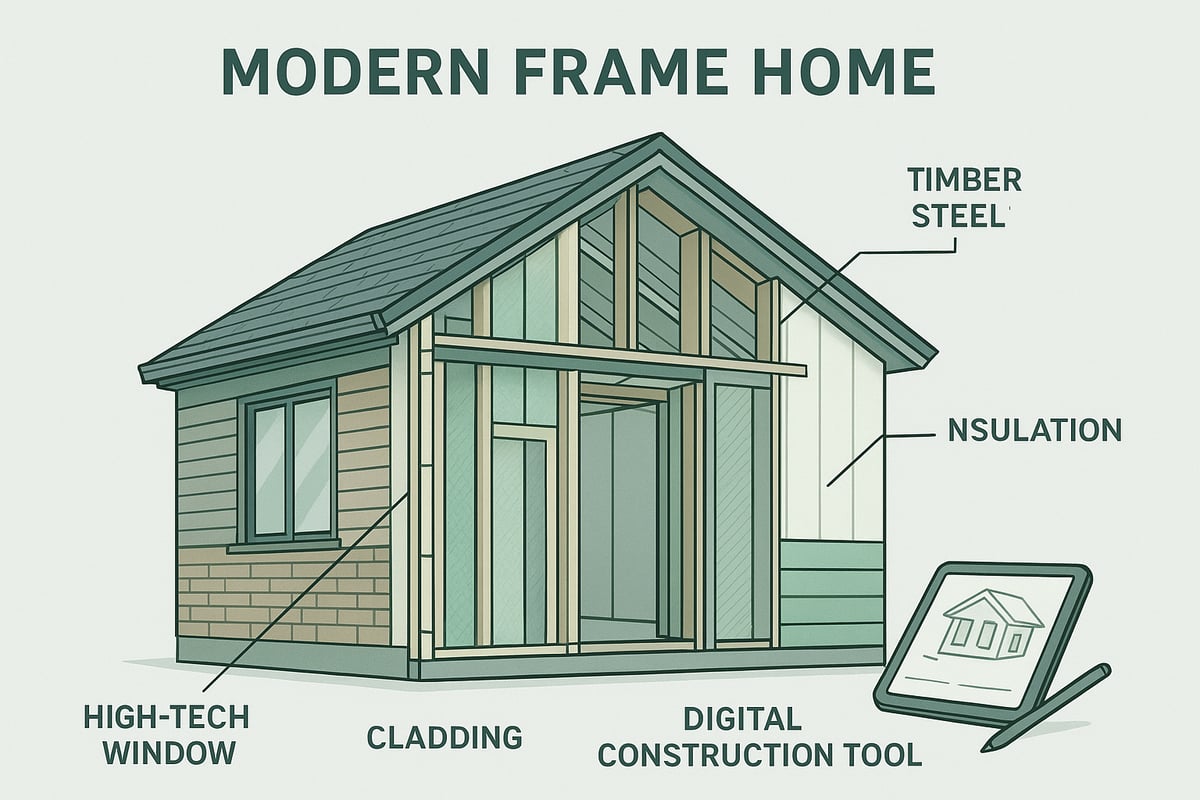
Timber vs. Steel: Pros, Cons, and Applications
Frame home construction in the UK often comes down to a choice between timber and steel frames. Timber, especially when sourced sustainably, offers natural warmth, excellent thermal performance, and ease of on-site work. Steel, on the other hand, excels in strength, making it ideal for larger spans or sites exposed to harsh weather.
Here is a comparison:
| Feature | Timber Frame | Steel Frame |
|---|---|---|
| Strength | Good, flexible | Very high, rigid |
| Sustainability | Renewable, low carbon | Recyclable, higher carbon |
| Cost | Generally lower | Can be higher |
| Fire Resistance | Treated timber performs well | Non-combustible |
| Acoustics | Good with insulation | May need extra treatment |
Oak frames are popular for family homes, while light steel frames suit projects needing precision or non-combustible structures. According to Structural timber’s role in housebuilding, timber frame home construction is expected to shape the future of UK housing, thanks to its sustainability and performance.
Sustainable Sourcing and Environmental Impact
Sustainability is central to frame home construction in 2025. Timber used should carry FSC or PEFC certification, ensuring responsible forestry practices and long-term environmental health. When comparing timber and steel, timber generally has a lower carbon footprint, especially if sourced locally and processed efficiently.
The UK government has set ambitious targets for low-carbon buildings, making sustainable choices not just preferable but often necessary. Choosing frame home construction with responsibly sourced materials helps reduce embodied carbon and supports a circular economy.
Innovations in Frame Construction Technology
Modern technology has transformed frame home construction. Off-site prefabrication is increasingly common, allowing precise manufacturing of components in controlled environments. This leads to reduced waste, faster assembly, and improved quality.
Digital tools such as Building Information Modelling (BIM) enable architects and builders to visualise and optimise every stage of the project. Modular systems and advanced connectors make frame home construction highly adaptable, letting designs evolve with emerging trends and homeowner needs.
Insulation, Air-Tightness, and Energy Performance
Energy efficiency is a standout benefit of frame home construction. High-performance insulation materials like PIR boards, mineral wool, and blown-in cellulose are now standard. These help meet the 2025 UK standards for energy efficiency, keeping homes warm in winter and cool in summer.
Attention to air-tightness and moisture control is essential. Well-sealed frames, combined with ventilation systems, prevent heat loss and condensation. Homeowners are seeing significant reductions in energy bills, with frame homes often outperforming traditional builds in thermal performance.
Finishes, Cladding, and Aesthetics
Frame home construction offers nearly unlimited design possibilities. Popular exterior finishes include brick slips for a traditional look, modern renders, or natural timber cladding for a contemporary edge. Internally, open-plan layouts and vaulted ceilings are easy to achieve, thanks to the structural flexibility of frames.
Trends for 2025 focus on biophilic design, with more natural materials and seamless connections to outdoor spaces. The right cladding and finish not only protect the structure but also define the character and value of the home.
Costs, Timelines, and Value for Frame Home Projects
Understanding the costs, timelines, and long-term value of frame home construction is essential for anyone planning a new build. With the 2025 market in mind, careful budgeting and project management can help you achieve a stylish, energy-efficient home that stands the test of time.
Cost Breakdown and Budgeting Tips
When planning frame home construction, costs can vary significantly depending on materials and design complexity. Average build costs in the UK for 2025 are estimated as follows:
| Frame Type | Avg. Cost (£/m²) | Notes |
|---|---|---|
| Timber Frame | 1,600–2,200 | Lower material cost, faster build |
| Steel Frame | 1,800–2,500 | Higher strength, more expensive |
Hidden expenses such as groundwork, connecting utilities, and landscaping can quickly add up. To avoid surprises, build a detailed budget that includes a contingency fund of 10–15 percent. For more on budgeting and real-world examples, see Log and Timber Frame Homes.
Construction Timelines and Milestones
A typical frame home construction project moves faster than traditional methods. From planning to completion, a new build can take as little as six to nine months. Key milestones include:
- Finalising design and securing planning permission
- Completing groundworks and foundations
- Erecting the frame and external envelope
- Fitting out interiors and finishing works
For example, a three-bedroom timber frame home can be completed in just six months with efficient project management. This speed reduces financing costs and minimises disruption.
Maximising Long-Term Value and Efficiency
Frame home construction offers strong long-term value due to energy efficiency, design flexibility, and durable materials. Market data shows that these homes often appreciate faster than conventional builds. According to a UK timber frame market analysis, demand for timber frame homes continues to rise, supporting strong resale values.
Easy maintenance and excellent thermal performance ensure ongoing savings on energy bills. Choosing sustainable materials and modern insulation will further boost your home's efficiency and appeal to future buyers.
Grants, Incentives, and Green Financing
The UK government is encouraging sustainable frame home construction through new grants and incentives in 2025. Homeowners may qualify for low-interest green mortgages, energy-efficiency grants, and VAT reductions on eco-friendly upgrades. Be sure to research eligibility criteria and application deadlines early in your planning process.
Many local authorities also offer incentives for building to high environmental standards, which can offset initial investment and improve affordability.
Choosing the Right Contractor or Builder
Selecting an experienced contractor is vital for the success of your frame home construction project. Look for professionals with a proven track record in frame building, positive client reviews, and relevant industry accreditations.
Always request detailed quotes, view previous projects, and check references. A skilled team will help you stay on budget, on schedule, and ensure your new home meets all quality and regulatory standards.
Future Trends and Innovations in Frame Home Construction
The landscape of frame home construction is evolving rapidly, with 2025 set to introduce new technologies and regulations. Homeowners and developers are seeking smarter, faster, and greener solutions. The following trends are shaping the future of the industry.
Smart Technology Integration
Smart technology is becoming a cornerstone of frame home construction. New homes increasingly feature integrated systems that control lighting, heating, and security. Internet of Things (IoT) devices connect appliances, sensors, and energy management tools for real-time monitoring.
For example, smart heating systems automatically adjust to occupancy and weather, improving efficiency. Ventilation systems are now designed to work seamlessly with the airtight envelopes of modern frame homes. These innovations not only enhance comfort but also optimise energy performance, making frame home construction the go-to choice for tech-savvy buyers.
Modular and Off-Site Construction
Modular and off-site construction methods are transforming frame home construction across the UK. Prefabricated components are manufactured in controlled environments, then transported and assembled on site. This approach drastically reduces build times, minimises waste, and delivers consistent quality.
Recent advancements include the use of robotics to precision-cut timber and assemble panels, as highlighted in Robotics and timber in UK housing. By combining off-site manufacturing with digital design, developers can achieve greater flexibility and efficiency. As demand for sustainable, affordable housing grows, modular frame home construction will play an increasingly vital role.
Sustainable and Circular Building Practices
Sustainability is at the forefront of frame home construction innovation. Builders are now prioritising materials that are recyclable, renewable, and locally sourced. Circular economy principles are gaining traction, encouraging designs that allow for future disassembly and reuse of components.
Projects are incorporating closed-loop systems for water and energy, reducing environmental impact. UK pilot schemes are leading the way in using reclaimed timber and low-carbon materials. As the industry embraces circular building practices, frame home construction is poised to set new standards for eco-friendly living.
Evolving Regulations and Standards
Regulations governing frame home construction are evolving to support net-zero targets and improved safety. Post-2025, stricter requirements for energy efficiency, fire safety, and material sourcing are anticipated. These changes will affect everything from insulation standards to structural design.
Industry initiatives are driving continuous improvement through training, certification, and innovation. Staying informed about regulatory updates is crucial for anyone involved in frame home construction. The future promises homes that are not only more sustainable but also safer and more resilient.
Having explored the ins and outs of modern frame home construction—from sustainable material choices and energy efficiency to planning, regulations, and future trends—you now have the knowledge to approach your dream project with confidence. Whether you are a self builder or a developer, partnering with a team that blends traditional craftsmanship and innovative design can make all the difference in creating a bespoke home that stands the test of time. If you are ready to turn these insights into reality and build a beautiful, durable timber frame structure tailored to your needs, I invite you to BUILD NOW.
